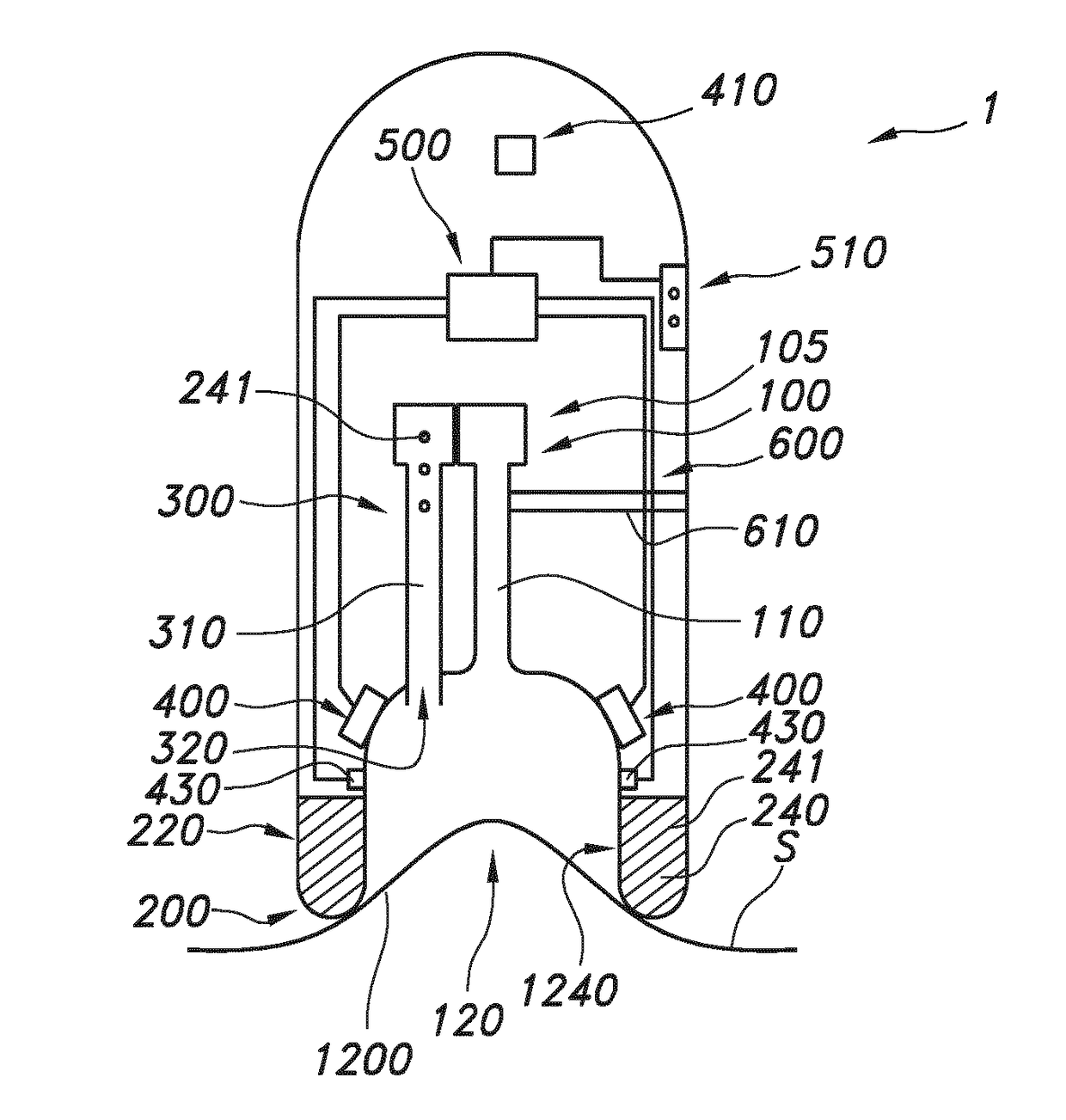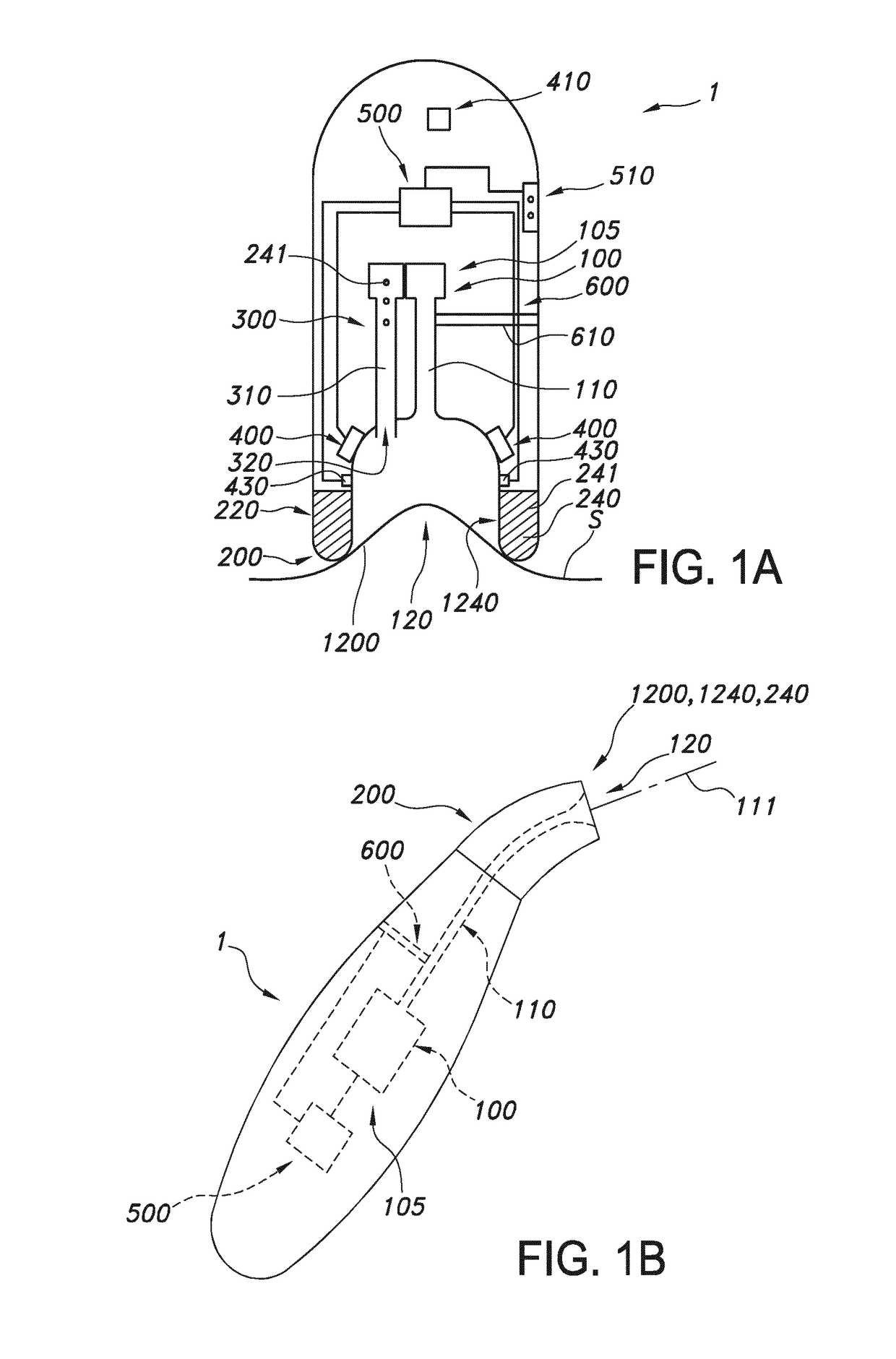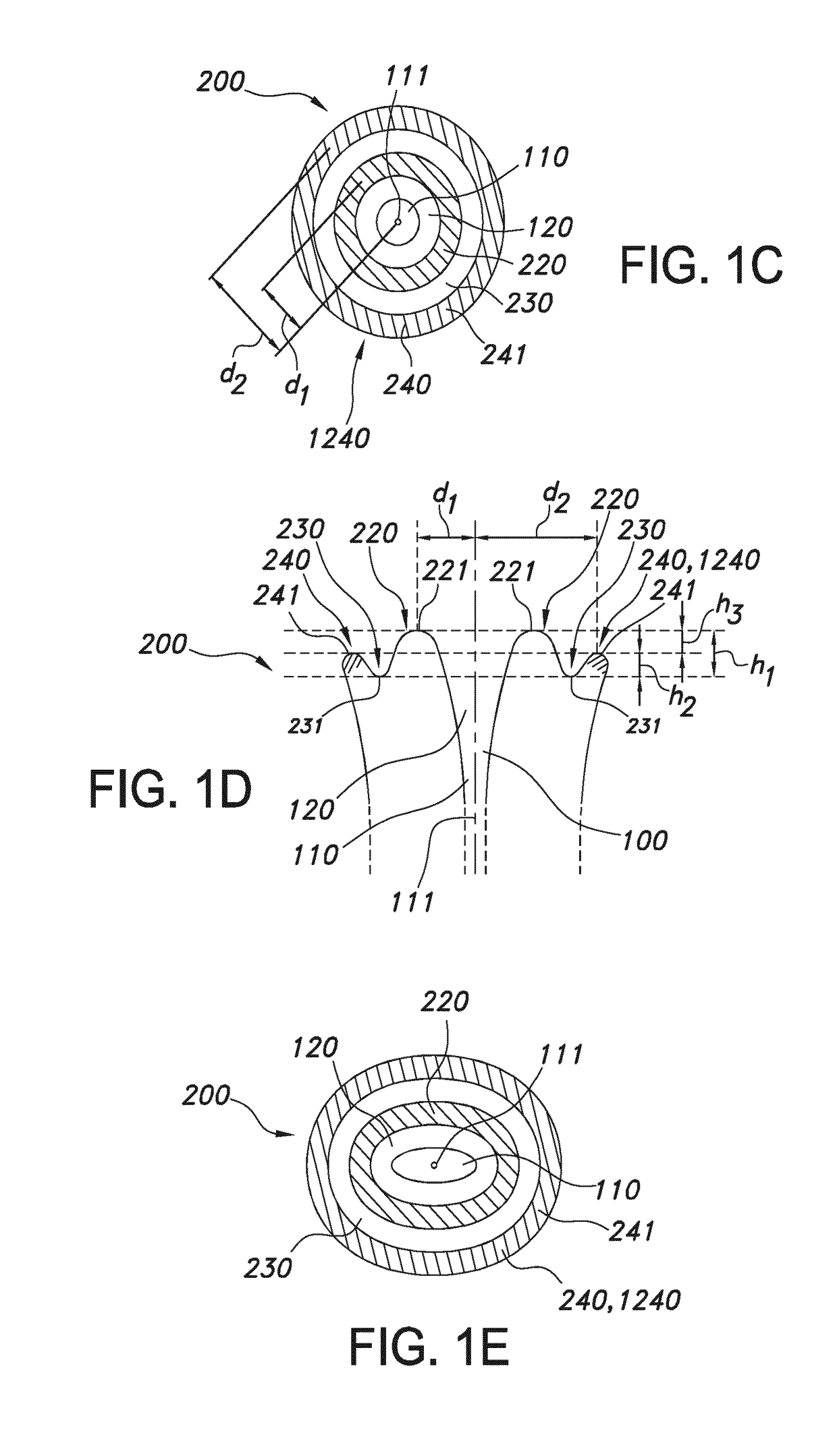Microdermabrasion device with skin dome measurement to adjust vacuum setting
a microdermabrasion device and vacuum setting technology, applied in the field of microdermabrasion devices, can solve the problems of non-optimal mechanical massage, higher friction, negative impact on device handling, etc., and achieve the effects of reducing lateral force, reducing lateral force, and reducing lateral for
- Summary
- Abstract
- Description
- Claims
- Application Information
AI Technical Summary
Benefits of technology
Problems solved by technology
Method used
Image
Examples
Embodiment Construction
[0052]FIG. 1a schematically depicts an embodiment of the microdermabrasion device 1 including optional variants that may be included or of which some may and others may not be included dependent upon the specific embodiment desired. FIG. 1a shows microdermabrasion device 1 comprising a vacuum system 100 and a device tip 200. Here, the vacuum system 100 comprises a channel 110 with a channel inlet 120 at an inlet zone 1200 of the device tip 200. The vacuum system 100 is configured to apply a vacuum to the inlet zone 1200. To this end, the vacuum system 100 also comprises a pump 105. The channel opening, may provide a vacuum area in the range of 10-400 mm2, such as at least 45 mm2, especially in the range of 45-400 mm2. Further, the inlet zone 1200 comprises a sensor 400 configured to measure a skin parameter of a part of a skin in the inlet zone 1200 and to provide a corresponding sensor signal. The skin is indicated as line with reference S, and is of course not a part of the microd...
PUM
 Login to View More
Login to View More Abstract
Description
Claims
Application Information
 Login to View More
Login to View More - R&D
- Intellectual Property
- Life Sciences
- Materials
- Tech Scout
- Unparalleled Data Quality
- Higher Quality Content
- 60% Fewer Hallucinations
Browse by: Latest US Patents, China's latest patents, Technical Efficacy Thesaurus, Application Domain, Technology Topic, Popular Technical Reports.
© 2025 PatSnap. All rights reserved.Legal|Privacy policy|Modern Slavery Act Transparency Statement|Sitemap|About US| Contact US: help@patsnap.com



